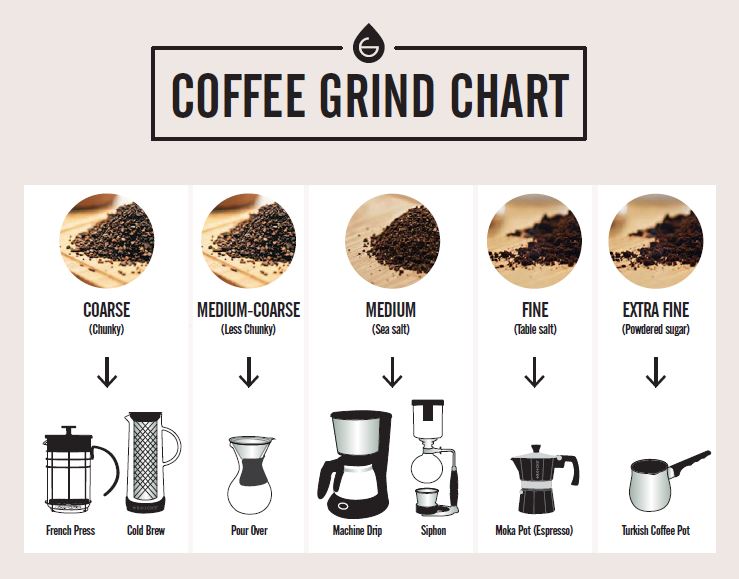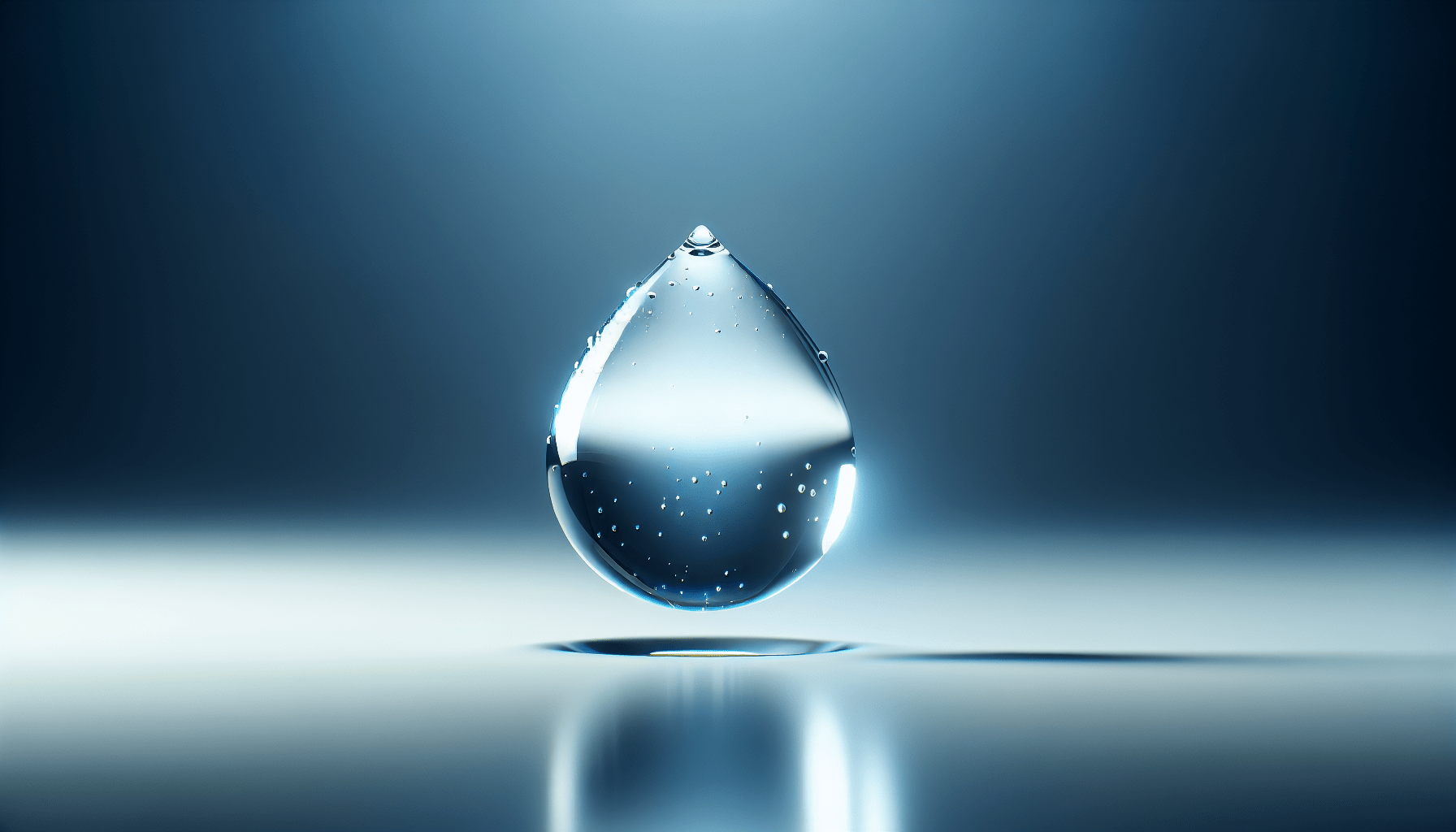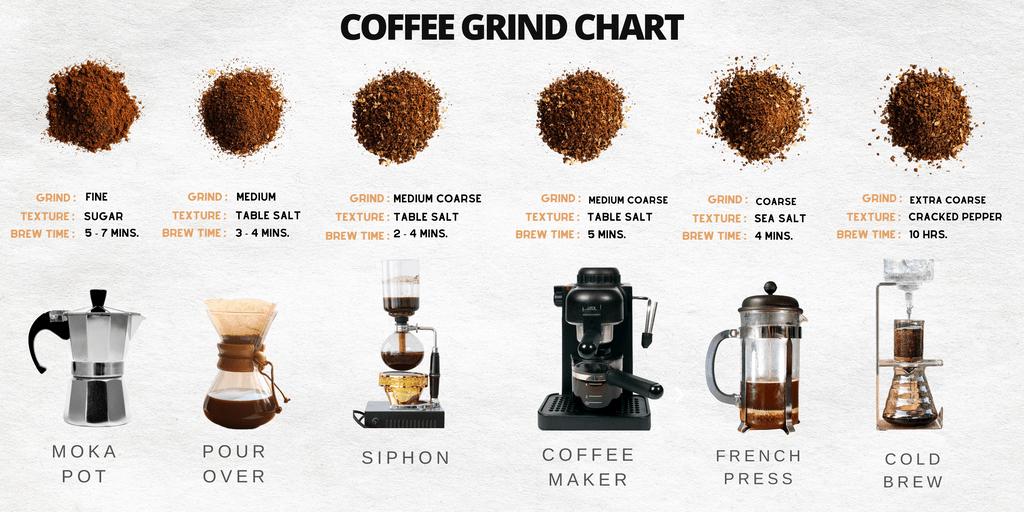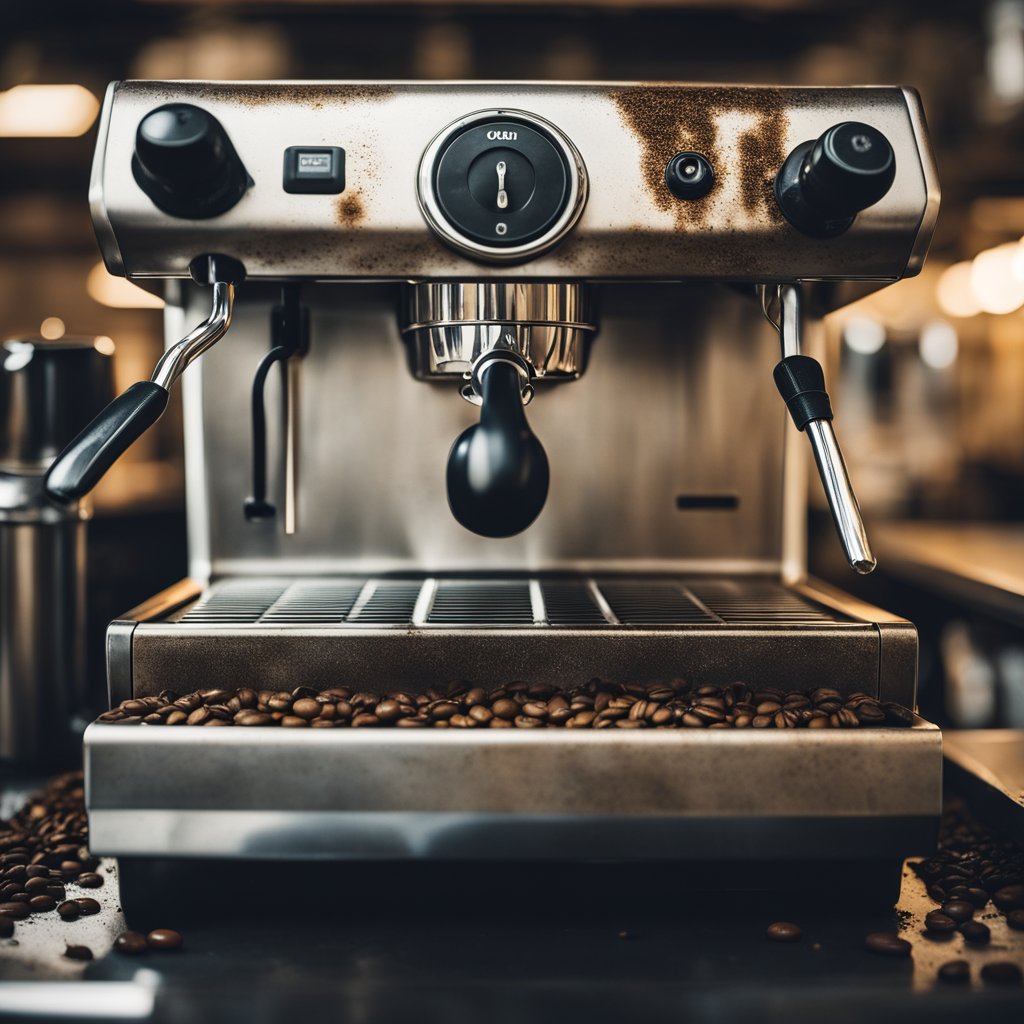Are you a coffee lover? Do you enjoy the rich, intense flavors of French press coffee? If so, you may have wondered what grind size is best for achieving that perfect cup. Well, look no further! In this article, we will explore the ideal grind size that will bring out the full potential of your French press coffee. So grab your favorite mug and get ready to elevate your coffee experience to a whole new level!
Importance of Grind Size
Impact on Flavor
The grind size of your coffee beans plays a crucial role in determining the flavor of your French press coffee. When you brew coffee, the water comes in contact with the ground beans, extracting the flavors and oils. The surface area of the coffee particles determines how quickly this extraction occurs. When you use a coarser grind, the water takes longer to extract the flavors, resulting in a more mellow and less intense taste. On the other hand, a finer grind allows for a faster extraction, leading to a bolder and more robust flavor.
Impact on Extraction
The extraction process in French press brewing is influenced by the grind size as well. Extraction refers to the process where the coffee flavors and compounds are dissolved into the water. A coarser grind will extract less of the coffee’s flavors, resulting in a weaker brew. Conversely, finer grinds will extract more fully, yielding a stronger and more concentrated coffee.
Impact on Brew Time
The grind size of your coffee beans also affects the brew time in French press coffee preparation. Generally, a coarser grind will require a longer brew time, as the water takes more time to extract the flavors from the larger particles. Conversely, a finer grind will lead to a shorter brew time, as the water can pass through the smaller particles more quickly.
Coarseness vs. Fineness
Coarseness for French Press
When it comes to French press coffee, a coarser grind is generally recommended. The coarseness allows for a slower extraction process, resulting in a smoother and less bitter cup of coffee. The larger coffee particles are less likely to be over-extracted, ensuring a balanced flavor profile. A coarse grind also reduces the risk of sediment ending up in your cup, giving you a cleaner brew.
Avoiding Fine Grind
While finer grinds are suitable for some brewing methods, they are not well-suited for a French press. Using a fine grind can lead to over-extraction, causing your coffee to taste bitter and muddy. Furthermore, the smaller particles are more difficult to filter with the French press screen, resulting in a gritty and less enjoyable cup of coffee. It’s best to steer clear of a fine grind when preparing coffee with a French press.
Finding the Right Balance
The key to achieving the perfect cup of French press coffee lies in finding the right balance between coarseness and fineness. Experiment with different grind sizes to determine your preferred taste and strength. Adjusting the grind size allows you to customize your brew to your liking, ensuring a rich and flavorful cup of coffee.
Factors to Consider
Bean Type and Roast Level
The type of coffee beans you use and their roast level also impact the optimal grind size for your French press. Different beans and roast levels will have varying densities and moisture levels, requiring adjustments in the grind size to achieve the desired extraction and flavor. Lighter roasts generally benefit from a slightly finer grind, while darker roasts often fare better with a coarser grind.
Brewing Time
Another factor to consider is the brewing time you prefer. If you enjoy a shorter brewing time, a finer grind will help you achieve that. However, if you prefer a longer and more leisurely brewing process, a coarser grind will be more appropriate. Consider your time constraints and personal preferences when determining the ideal grind size for your French press coffee.
Personal Preference
Ultimately, the grind size you choose depends on your personal taste preferences. You may prefer a stronger and bolder cup of coffee or a milder and smoother one. Experiment with different grind sizes to discover your preferred flavor profile. Don’t be afraid to make adjustments and find the perfect balance that suits your taste buds.
General Guidelines
Recommended Grind Size Range
While personal preference plays a crucial role, there are general guidelines to follow when it comes to French press grind size. Aim for a grind size that falls within the coarse to medium-coarse range. This allows for a slower extraction process and reduces the risk of over-extraction. Remember, it’s easier to adjust a coarser grind by increasing brewing time than it is to fix an over-extracted cup of coffee.
Adjusting for Desired Strength
If you find your French press coffee is too weak or strong, you can adjust the grind size to achieve the desired strength. If your coffee tastes weak, try using a slightly finer grind to increase extraction. Conversely, if your coffee is overpowering, try a coarser grind to reduce extraction. The ability to adjust the grind size provides flexibility in tailoring your coffee to your individual taste preferences.
Trial and Error
Finding the perfect grind size for your French press is a process of trial and error. It may take a few attempts to dial in the grind size that produces the optimal flavor. Keep experimenting, making small adjustments each time, until you find the sweet spot that consistently delivers a delicious cup of French press coffee.
Benefits of Coarser Grind
Reduced Over-Extraction
One of the primary benefits of using a coarser grind in a French press is that it reduces the risk of over-extraction. The larger particles take longer to extract flavors, preventing the coffee from becoming bitter or overpowering. This allows for a more balanced and enjoyable cup of coffee, particularly for those who prefer a milder taste.
Enhanced Body
A coarser grind also enhances the body of your French press coffee. The larger particles contribute to a fuller mouthfeel, adding depth and richness to the brew. The result is a more satisfying and satisfying coffee experience, as the fuller body enhances the overall taste and texture.
Avoiding Silt
Sediment, often referred to as silt, can be a common issue when brewing French press coffee. Using a coarser grind helps minimize this problem by allowing the larger particles to settle at the bottom of the brewer, reducing the amount of sediment in your cup. This ensures a cleaner and smoother cup of coffee, free from unwanted particles that can alter the taste and texture.
Drawbacks of Coarser Grind
Lighter Flavor
While a coarser grind can provide a mellow and balanced cup of coffee, it may result in a slightly lighter flavor compared to a finer grind. The larger particles take longer to extract, meaning some of the coffee’s nuances and subtle flavors may not be fully captured. If you prefer a more pronounced and intense flavor, you may find a coarser grind to be lacking in vibrancy.
Less Intense Aroma
Similarly, a coarser grind can result in a less intense aroma compared to a finer grind. The larger particles release fewer aromatic compounds into the air, which can impact the overall sensory experience of your coffee. If you value the aroma as much as the taste, you may consider experimenting with slightly finer grinds to enhance the aromatic profile of your French press coffee.
Potential Under-Extraction
Using a coarser grind increases the risk of under-extraction in your French press coffee. If the grind size is too coarse or the brewing time is too short, the water may not extract enough of the coffee’s flavors, resulting in a weak and lackluster brew. It’s essential to find the right balance between coarseness, brewing time, and water temperature to avoid under-extraction and achieve a well-rounded cup of coffee.
Avoiding Fine Grind
Risk of Over-Extraction
Using a fine grind in a French press poses a significant risk of over-extraction. The smaller particles extract quickly, potentially resulting in a bitter and unpleasant taste. Over-extracted coffee can be overpowering and mask the finer nuances of the beans’ flavors, leaving you with a subpar coffee experience. It’s best to steer clear of fine grinds when brewing with a French press.
Bitter and Muddy Coffee
With a fine grind, the water can easily over-extract the coffee, leading to a brew that is excessively bitter and muddy. The increased surface area of the smaller particles allows for a more thorough extraction, but this can quickly turn into an unpleasant taste if not carefully managed. To avoid a bitter and muddy cup of coffee, it’s crucial to focus on a coarser grind for your French press brewing.
Difficult Filtration
Fine grinds can create challenges when it comes to filtration in a French press. The small particles are more likely to slip through the mesh screen, resulting in a cup of coffee with excessive sediment and a gritty texture. This can make the coffee less enjoyable to drink and compromise the overall experience. To ensure a smooth and sediment-free cup, it’s best to use a coarser grind that allows for easier filtration.
Experimenting with Grind Size
Determining Preferred Coarseness
Experimentation is key when determining the preferred coarseness for your French press coffee. Start by trying a grind size on the coarser side and gradually adjust it with each brewing session. Take note of the flavors, body, and aroma of each cup. Are they too mild or too intense? Use your observations to guide you towards finding the perfect grind size that caters to your personal taste preferences.
Finer Grind for Stronger Brew
If you’re craving a stronger and bolder cup of French press coffee, consider trying a slightly finer grind. The smaller particles will extract more flavor, resulting in a richer and more concentrated brew. However, be cautious not to go too fine, as this can lead to over-extraction and a bitter taste. Fine-tuning the grind size is essential to strike the right balance between strength and taste.
Coarser Grind for Milder Brew
On the other hand, if you prefer a milder and more mellow cup of coffee, opt for a coarser grind. The larger particles will extract less flavor, resulting in a smoother and less intense brew. This allows for a more leisurely coffee-drinking experience, perfect for those who enjoy savoring each sip without overwhelming their taste buds with strong flavors. Adjust the coarseness to meet your desired taste profile.
Grind Size and Brewing Time
Coarser Grind and Shorter Brew
When using a coarser grind, you will generally need a longer brewing time to ensure sufficient extraction. However, if you prefer a shorter brewing time or find that your coffee is too weak, you can make adjustments. Increase the amount of coffee used or try grinding slightly finer to compensate for the shorter brew time. Remember, finding the right balance between coarseness and brewing time is crucial to achieving the desired flavor.
Finer Grind and Longer Brew
Conversely, when using a finer grind, the extraction process occurs at a faster pace. This means you may need a shorter brewing time to prevent over-extraction. However, if the brew is too strong or bitter, you can adjust by using less coffee or coarsening the grind slightly. Finding the perfect combination of grind size and brewing time ensures a harmonious extraction that brings out the best flavors in your French press coffee.
Balancing Extraction and Brew Time
Balancing the grind size, extraction, and brew time is essential to achieve the ideal cup of French press coffee. Keep in mind that small adjustments can have a significant impact on the taste and strength of your brew. Take the time to experiment and fine-tune these variables to discover the perfect balance that suits your personal preferences.
Conclusion
Grind size plays a crucial role in the flavor, extraction, and brew time of French press coffee. The coarseness or fineness of your grind impacts the balance of flavors and the strength of your cup. It is important to consider factors such as bean type, roast level, brewing time, and personal preference when determining the optimal grind size.
While a coarser grind offers benefits such as reduced over-extraction, enhanced body, and avoiding silt, it may result in a lighter flavor and less intense aroma. Fine grinds should be avoided to prevent over-extraction, bitter coffee, and difficult filtration. Experimenting with different grind sizes allows you to determine the perfect coarseness and adjust for desired strength.
The relationship between grind size and brewing time is crucial to achieving optimal extraction. Finding the right balance ensures a well-rounded and flavorful cup of coffee. Ultimately, the impact of grind size on French press coffee is a matter of experimentation and finding the preferences that suit your taste buds. So go ahead, start grinding, brewing, and savoring the journey to your perfect cup of French press coffee.




